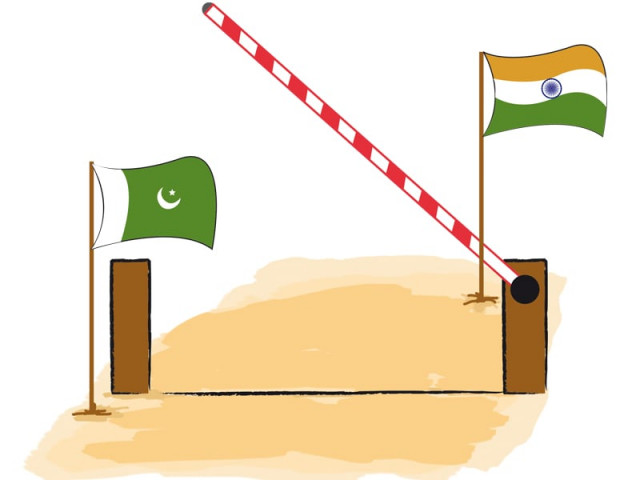Trade with India: a cautious approach urged
Business, traders want step-wise progress for mutual benefit.

Leading business sector members have suggested that the government should not give non-discriminatory market access to India in one go and should reduce the negative list in phases to protect the country’s interests.
In addition, they have requested for an equal partnership on a public-private basis for the recently-announced Land Port Authority (LPA) scheme, to effectively utilise the port and to control the scope of trade between the two neighbouring countries.

“There should be an equal contribution of private sector in the LPA, security of the port should be controlled by our forces whereas the business activities should be under the control of the private sector,” said Pakistan Trade Promotion Committee for Lahore Chamber of Commerce and Industries Chairman Aftab Ahmad Vohra while talking with The Express Tribune.
According to business community trade facilities at Wagah border are far from favourable. For instance, the current infrastructure at Wagah for the import of 138 items from India is not supportive and hardly 300 trucks can be parked alongside the border at the Grand Trunk Road.
On the other hand, India at Attari has established a new integrated check post, with modern and very much supportive structure that supports the massive size of trade trucks.
The bilateral trade between India and Pakistan currently is around $2.4 billion. According to Vohra, till the year 2012, the size of bilateral trade was $2 billion in which Indian share was $1.5 billion and Pakistan’s share was only $0.5 billion. Currently, Pakistan’s trade share has not changed from $0.4 billion, however, India’s share has reached $1.9 billion from $1.5 billion.
Experts also believe that unaccounted trade volume between these two countries via third country is around $10 billion — this shows the scope of bilateral trade that exists between the two countries of this region.
The negative list and non tariff barriers are the major hurdles for bilateral trade and both countries have their own reservations.
“We should first ensure that the domestic industry is strong enough to compete with its Indian counterpart,” said Shahzad Ali Khan, a leading textile miller and former chairman of All Pakistan Textile Mills Association, Punjab.
For many years India had banned any imports in the country in order to strengthen their local industries. In many cases the Indian companies worked alongside their foreign counterparts to give expert knowledge. Once this was achieved, they removed that sector from their negative list. The Pakistani industrialist also urged Pakistan to follow in the footsteps.
Published in The Express Tribune, July 19th, 2014.
Like Business on Facebook, follow @TribuneBiz on Twitter to stay informed and join in the conversation.



















COMMENTS
Comments are moderated and generally will be posted if they are on-topic and not abusive.
For more information, please see our Comments FAQ